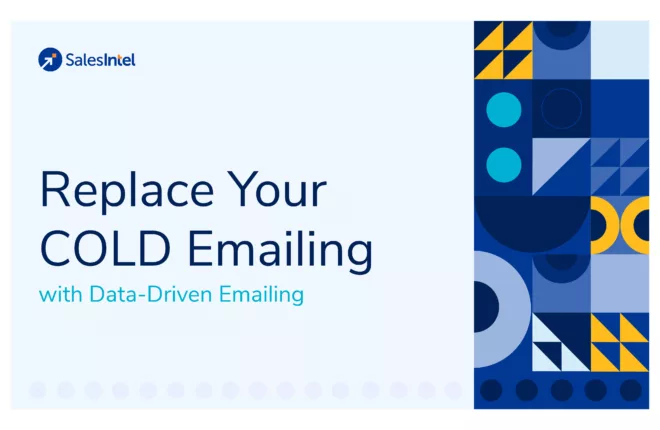Email marketing continues to be one of the most popular, direct, and cost-effective mediums of reaching out to your potential customers. With more businesses trying to grab their customers’ attention, successful email marketing takes center stage. According to Campaign Monitor, 59% of B2B marketers consider email their top revenue-generating marketing channel. If your email marketing ROI is less than impressive, it’s time to make a change.
A basic formula for calculating your email marketing ROI is:
(Gain-Spend)/Spend = ROI
So, you need to make sure your gains are high while keeping the spending in check. In this article, you will learn eight of the best ways to do that. A few ways require investments (but with good returns), and some only require you to follow best practices.
1. Invest in Email Marketing Automation
Email marketing automation is a method of creating email campaigns on a large scale and reaching out to the right people at the right time – without having to manually replicate the procedure over and over. Even though email automation can simplify your task, you can never get into the “set it and forget it” mode.
To demonstrate the ROI of your campaign, monitor how your audience communicates with your emails. This is accomplished by calculating revenue per email (RPE), revenue per thousand emails (RPME), and revenue per recipient (RPR). Examining the campaign through this prism also provides you with a fresh outlook on best practices for optimization. Quickly, the focus changes from quantity to quality.
Determine what is better for the target audience. Schedule the emails for when they are more likely to read (rather than just open) them. Email automation can simplify the research. However, we suggest that you use as much intentional study as possible.
2. Use Website Visitor Data
A website is a vital part of every business, and so is Google Analytics. Website visitors create the highest chances of converting into a lead or responding to your email. Identifying the demography and interests of your website visitors can help you tailor your email messaging accordingly.
Google Analytics is a smart way to learn about a visitor’s location, items they are interested in (based on pages viewed), and other valuable data. You will also be able to monitor when users return days, weeks, months, or years after they first show up, depending on the service you use on your website.
You can go the extra mile and use a visitor identification tool like VisitorIntel to better identify who visited your site and learn what company they work for. Then you can access company and decision-maker contact information. You now have a list of decision-makers with their respective email who have shown interest in your product or service and are ideal prospects. Technographic and firmographic data can help you in drafting hyper-focused messaging when reaching to them.
3. Monitor and Utilize Campaign Response Data
Your email marketing platform has a lot of data from previous campaigns. You know who opens your emails, what type of device they are using to read your email, what time of day they open them, what links they click on, and where they are when they receive them.
You should also be able to keep track of who has made purchases and what they have purchased. With this information, you can start segmenting your lists and creating customized messages for your next campaign.
This data is invaluable for analyzing the success of your campaigns and for assisting you in the development of 1:1 email communications.
4. Validate Email Addresses
Emails that never make it to their target receiver have little impact and reduce the success of the campaign. Several factors can result in a low sender reputation score. If recipients often report your messages as spam, that will definitely impact your reputation. Low open rates and high bounce rates will have the same effect.
Email authentication and inspection ensure that emails are sent to legitimate, active email addresses. This raises the open rate and ROI of your email campaign. Marketers check that emails are sent to correct addresses by using an email authentication and verification process or simply by partnering with a reliable B2B data provider. They can lower their bounce rate as data accuracy increases.
5. Create a Mix of Styles and Methods
To avoid having your B2B email marketing underperform, consider mixing up campaign styles and methods. As you test different email components such as delivery days, content angles, surveys, and fulfillment pieces, you will start to learn what your prospects are responding to. By keeping your content and methodology fresh, you will have a better chance of keeping your readers engaged.
6. Focus on Deliverability
Another aspect on which you can focus to improve the ROI of your email marketing is deliverability. Did you send emails to a large list all at once, or did you send targeted emails to small audiences?
High deliverability does not happen by chance. It is dependent on various factors, including relevance, data security, content, and the proper technological setup. The list goes on.
Deliverability is inextricably tied to data security legislation and, most importantly, the recipient’s wishes. Emails that are viewed or labeled as spam have a detrimental effect on the credibility and, as a result, deliverability. So, the higher the deliverability, the higher the returns from your email marketing campaign.
7. Focus on Mobile-Optimized Emails
If your emails aren’t mobile-friendly, you might be missing opportunities to engage potential customers and generate revenue. An observation by Campaign Monitor revealed that 66% of emails are often read on mobile devices and tablets. That means, optimizing your emails for mobile readability is crucial.
Before sending your emails, don’t forget to check your email from a mobile view. When creating mobile-friendly content, it is critical to keep it brief and to the point. Make content that is short and easy to consume (e.g. short paragraphs). Place the CTAs in proper places considering the prospect screen size.
8. Focus on Highly-Targeted List Building
The purpose of building a B2B list is to provide a highly accurate and focused prospect list. You don’t want to spend weeks or even months emailing a prospect from your list just to discover that this person isn’t a good fit for your product. Or worse, that they are no longer employed by the company. By sending emails to a large number of contacts that aren’t relevant, you are setting yourself up for low response rates, insufficient pipeline volume, and reduced sales.
The easiest and quickest way to construct your prospect list is using a sales intelligence tool. This method reduces the process of identifying companies, decision-makers, and verified data to a single stage.
For instance, you want to target the marketing managers or VPs from the SaaS companies who use HubSpot’s email platform and have a 500-1000 company size in the United States. Using tools like SalesIntel, you can apply the filters as per your lead qualification requirement, and you will get the filtered, highly targeted prospect list. This process can save a large portion of your day than could have gone in searching for the data.
Data and Analysis are Key
Review the following takeaways to get an idea of where to begin to increase email marketing ROI:
- Use marketing automation to improve the effectiveness of the emails. If you use the right email software, you will be able to create more powerful campaigns.
- Analyze each part of your email carefully. You want everything to matter: the subject line, the preheader text, the material, the photographs, and the CTA.
- Given that data can decay every 12-14 months, you need to maintain data hygiene to ensure higher productivity from your email campaign efforts.






